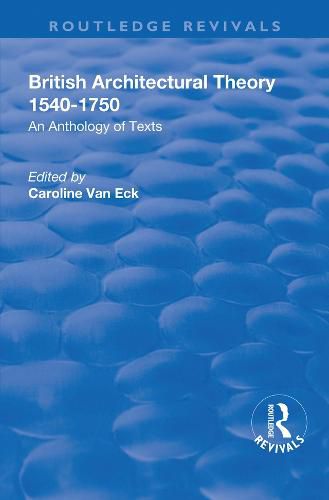Readings Newsletter
Become a Readings Member to make your shopping experience even easier.
Sign in or sign up for free!
You’re not far away from qualifying for FREE standard shipping within Australia
You’ve qualified for FREE standard shipping within Australia
The cart is loading…






This book was published in 2003. Although it is often assumed that British writing on architectural theory really started in the 18th century, there is in fact a large corpus of writing on architecture pre-dating the introduction of Palladianism by Lord Burlington. Some of it, such as the English editions of Serlio and Palladio, belongs to the Vitruvian tradition. But many texts elude such easy classification, such as the prolonged (but hardly studied) discussions on church architecture, which are both in form and content very different from the way that theme was handled in Italian Renaissance treatises. This collection of English writing on architecture from 1540 to 1750 offers a large selection of fragments, some of them never published before. They discuss the nature of architecture, the practicalities of building, the sense of the past, religious architecture and classicism.
$9.00 standard shipping within Australia
FREE standard shipping within Australia for orders over $100.00
Express & International shipping calculated at checkout
This book was published in 2003. Although it is often assumed that British writing on architectural theory really started in the 18th century, there is in fact a large corpus of writing on architecture pre-dating the introduction of Palladianism by Lord Burlington. Some of it, such as the English editions of Serlio and Palladio, belongs to the Vitruvian tradition. But many texts elude such easy classification, such as the prolonged (but hardly studied) discussions on church architecture, which are both in form and content very different from the way that theme was handled in Italian Renaissance treatises. This collection of English writing on architecture from 1540 to 1750 offers a large selection of fragments, some of them never published before. They discuss the nature of architecture, the practicalities of building, the sense of the past, religious architecture and classicism.